Manually cleaning up your garden with a rake can be quite a job – that's where the best garden vacuum comes in. A garden vacuum is quick to suck up leaves and debris while compressing or mulching the waste for effortless removal and clean-up. Much like a leaf blower, it's great for clearing fallen leaves and garden debris that builds up in the garden. You can also use such a tool to clear porches, patios, and driveways.
On a surface level, a garden vacuum and leaf blower seem to have a similar purpose. Some models combine blow and vacuum functions, so it's a vacuum and leaf blower in one. However, there are slight variations in modes and features. A leaf blower would be more fitting for a larger garden, as it can cover an area more quickly than a vacuum. It blows all the leaves to one area to clear up afterwards, ready to remove before you get the lawn mower out. It won't risk getting blocked or damaged from sucking up stones and debris and is usually easier to use than a vacuum.
Best garden vacuum at a glance:
• Best overall garden vacuum: VonHaus Leaf Blower 3000W Garden Vacuum - View on Amazon UK
• Best tried and tested garden vacuum: WORX WG583E 40V Dual Battery Vacuum - View on Homebase
• Best lightweight garden vacuum: Terratek Leaf Blower Garden Vacuum and Shredder Collection Bag - View on Amazon UK
If your primary goal is to remove leaves in an average-sized garden, then a garden vacuum is more suitable. It’s a multi-purpose tool, and most garden vacuums have a mode to shred leaves and small twigs for composting. Using a garden vacuum is less time-consuming as you won't need to pick up the leaves manually, and it's simple to switch between settings and modes as leaves are collected in a bag, making it a more straightforward job overall.
Best garden vacuums
Best overall garden vacuum
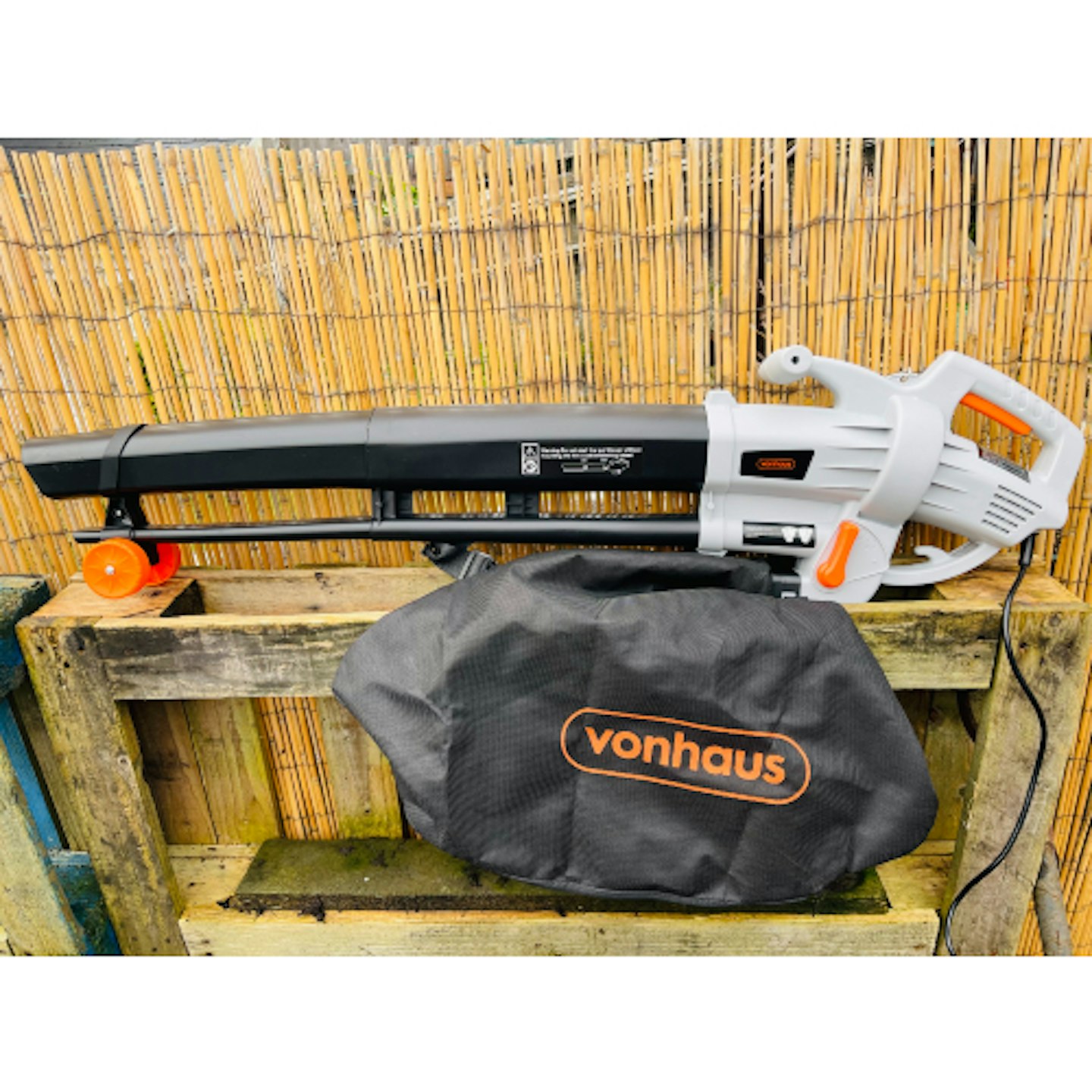 Modern Gardens
Modern Gardens This highly-rated garden vacuum from VonHaus is lightweight, affordable, and powerful. With a 3,000W motor, this vacuum will make your garden clean-up a breeze. It has a 35-litre collection bag with a shredding ratio of 10:1, so it won't take you long to empty the bag.
This tool features wheels at the end of the nozzle for better manoeuvrability, a shoulder strap to keep things steady and make the process more comfortable, and a 10-metre power cable for decent reach around your outside space.
Tried and tested by Modern Gardens Commerce Content Writer Amy-Mae Turner: "This VonHaus leaf blower and garden vacuum arrives in a surprisingly compact box, which you may want to keep hold of if you know you're going to be disassembling it and not using it for many months of the year. There is a handy QR code to scan on one of the tubes that takes you to an online VonHaus customer care guide for the blower, complete with video.
It's simple to put together with the two suction/blowing tubes fitting into place with reassuring clicks, while the collection bag does the same. You need to add three screws to fix all the parts together securely, I struggled with one screw as the hole hadn't been drilled in the plastic properly, but I managed it by switching to an electric screwdriver and applying a lot of force.
Once constructed, this garden tool is lightweight, if a little unwieldy. The support handle on the top of the vacuum is perfectly positioned, and the trigger is logically placed on the underside of the main handle. On the machine it very clearly states that you must ensure the function switch is fully engaged onto the notches. Initially, I didn't realise quite how 'fully engaged' the instructions meant and got an odd mix of blowing and suction, but once my error was realised the machine both blew and sucked in a very efficient manner, although it's not the most quiet option. VonHaus recommends wearing ear defenders using this tool, and I think if you're planning on doing more than blow a few leaves off your driveway it's good advice.
This comes complete with a wheeled attachment but I found the angle you had to hold the machine for the wheels to make contact with the ground uncomfortable for my back. Thankfully, at around three and a half kilograms, this is lightweight enough to mean you don't need to use the wheels - and the included shoulder straps helps. Emptying the collection bag is made simple by a zip-up closure at the base of the bag and the leaves were mulched down enough to go in a compost bin. Do bear in mind if you do want to break this machine down to store it you need to unscrew two screws to remove the nozzles from the body of the vacuum, but in theory that's a relatively quick task.
Overall, I found this three-in-one tool easy to assemble, very simple to use, and effective at the three tasks is promises to do; blowing, vacuuming, and mulching. This is a strong option in the budget category for anyone who wants a garden vacuum for seasonal use."
Pros
- A 10:1 shredding capability for compact disposal
- Front wheels for easy manoeuvrability on hard surfaces
Cons
- Some reviewers say the bag is flimsy
| Dimensions: | 119 x 17 x 32.5cm |
| Weight: | 3.56kg |
| Power source: | Corded electric (10m cable) |
| Power: | 3000W |
| Collection bag capacity: | 35L |
Best tried and tested
 Worx/Homebase
Worx/HomebaseThe Worx WG583E can be used as a traditional leaf blower or set up as a vacuum by attaching a collection bag and inserting a large cylindrical pipe into the intake. It's quite a clever design and doesn't require any tools, but it does take a little longer than other garden vacs we've used, which have an internal paddle of sorts that allows you to switch between blower and vacuum.
The advantages are huge though - when that style of vacuum gets blocked up, you have to take the whole thing apart to access the fan. On the Worx vac, you just pull the nozzle off and shake anything stuck in there loose. I also think it allows for a clearer internal pathway, so there's less chance it'll get clogged up anyway.
Running off two batteries, the Worx is plenty powerful enough, and I can get round my entire back garden on a single charge. The lack of cable speeds things up massively because you don't have to keep untangling a power cord or winding up an extension lead afterwards.
The vacuum bag is a good size and has a shoulder strap attached, and a long zip so you can shake it out easily when it's full up. The only slight headache is the safety guard that must be in place over the fan to use it as a blower. I've misplaced it twice, and it can be a little hard to remove with one hand.
This garden vacuum was tried and tested by Adam Binnie, our Affiliate Operations Editor. You can also read our full Worx twin-test: Leafjet blower vs WG583E blower/vacuum review.
Pros
- Incredibly powerful for very effective clean-ups
- This is ideally suited to large outdoor spaces
Cons
- Heavy, need to use two hands
| Dimensions: | 33 x 50 x 27.5cm |
| Weight: | 3.8kg |
| Power source: | Battery-powered |
| Power: | 2 x 20 volts Li-ion |
| Collection bag capacity: | 35L |
Best lightweight garden vacuum
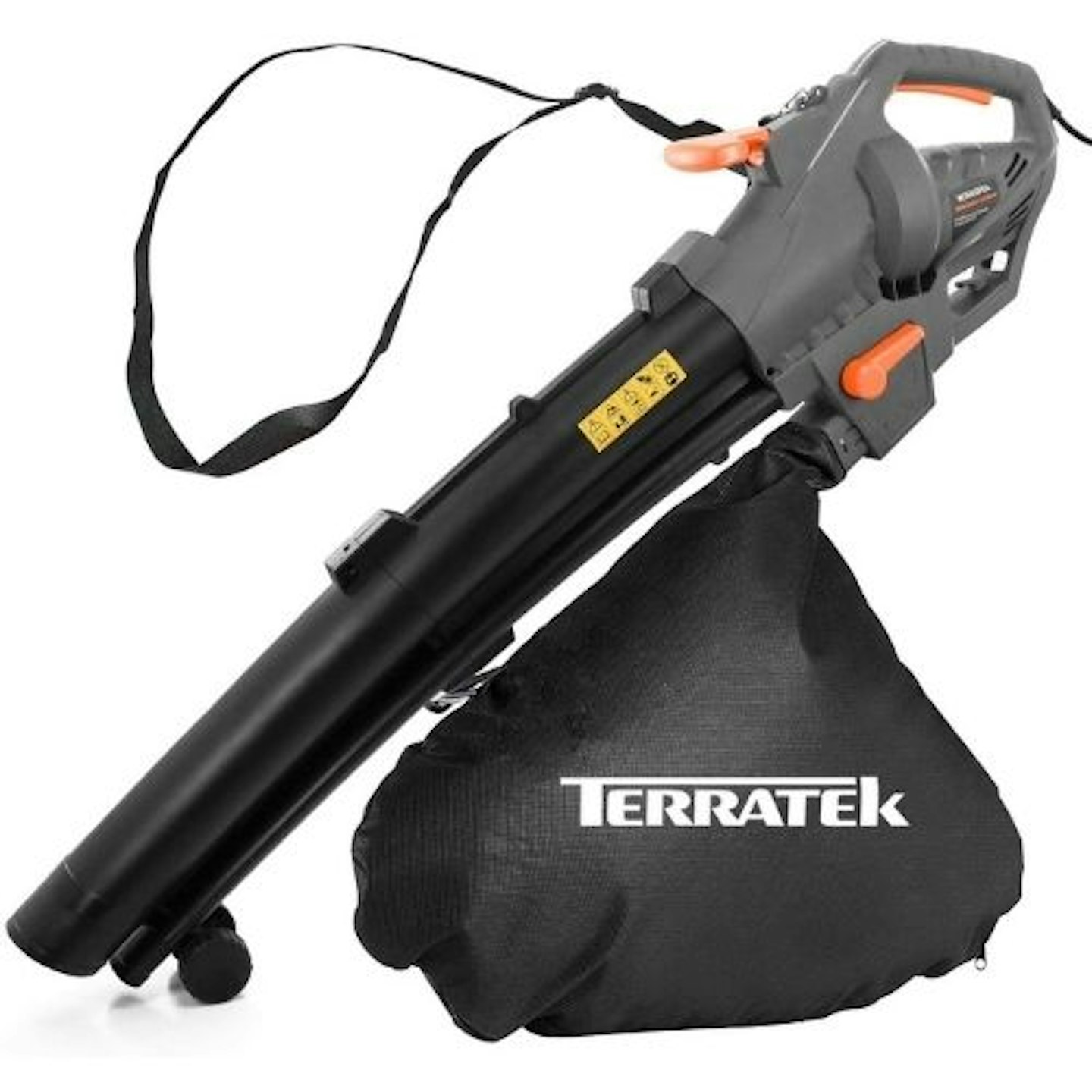 Terratek/Amazon
Terratek/AmazonThis Terratek garden tool is a powerful option that will make tidying your garden as easy as possible, as leaves and other garden debris will be no match for the super airspeed of 167mp/h. This boasts a 35-litre collection bag, a 10:1 shredding ratio, and a shoulder strap.
It not only acts as a leaf blower but as a vacuum and shredder as well and you can switch between the settings with a push of a switch. Reviewers say this is easy to assemble, so you can get the job done as quickly as possible.
Pros
- This tool offers simple assembly and operation
- Multi-purpose with vacuuming, blowing, and shredding
Cons
- Doesn't perform well with wet leaves
| Dimensions: | 120 x 35 x 15cm |
| Weight: | 3kg |
| Power source: | Corded electric (10m cable) |
| Power: | 3000W |
| Collection bag capacity: | 35L |
Best multipurpose garden vacuum
 Flymo/Amazon
Flymo/Amazonwww.currys.co.uk
This powerful, easy-to-use, multi-purpose garden tool from Flymo works as a vacuum, blower or mulcher for your garden or lawn. The three-in-one functionality is ideal for various tasks and will clear up any leaves and garden debris, leaving your outdoor space looking clean and appealing.
This high-end Flymo option gives you 3,000W of power, a large 45-litre capacity collection bag, and the ability to shred to a 16:1 ratio. This comes with two differently-shaped nozzles to suit your needs.
Pros
- A large 45-litre collection bag for less emptying
- Two different nozzles to suit the task at hand
Cons
- Be careful, as it tends to clog up
| Dimensions: | 76 x 26 x 119cm |
| Weight: | 4.8kg |
| Power source: | Corded electric (10m cable) |
| Power: | 2700W |
| Collection bag capacity: | 45L |
Best quiet garden vacuum
 Bosch/Amazon
Bosch/AmazonThis powerful yet quiet garden vacuum from Bosch will leave your garden or lawn looking neat and tidy in no time. The simple switch permits speed to be controlled easily between the vacuuming, leaf blowing and shredding modes.
Thanks to Bosch's patented ProSilence technology this emits just 99dB of noise, so as one of the quietest models on the market, it will not disturb any neighbours.
Pros
- One of the quietest on the market
- Collection bag features moisture-repellent "Dirt Deflectors"
Cons
- A bit fiddly to change over from suction to blower
| Dimensions: | 67 x 23 x 115cm |
| Weight: | 3.4kg |
| Power source: | Corded electric |
| Power: | 1800W |
| Collection bag capacity: | 45L |
Best cordless garden vacuum
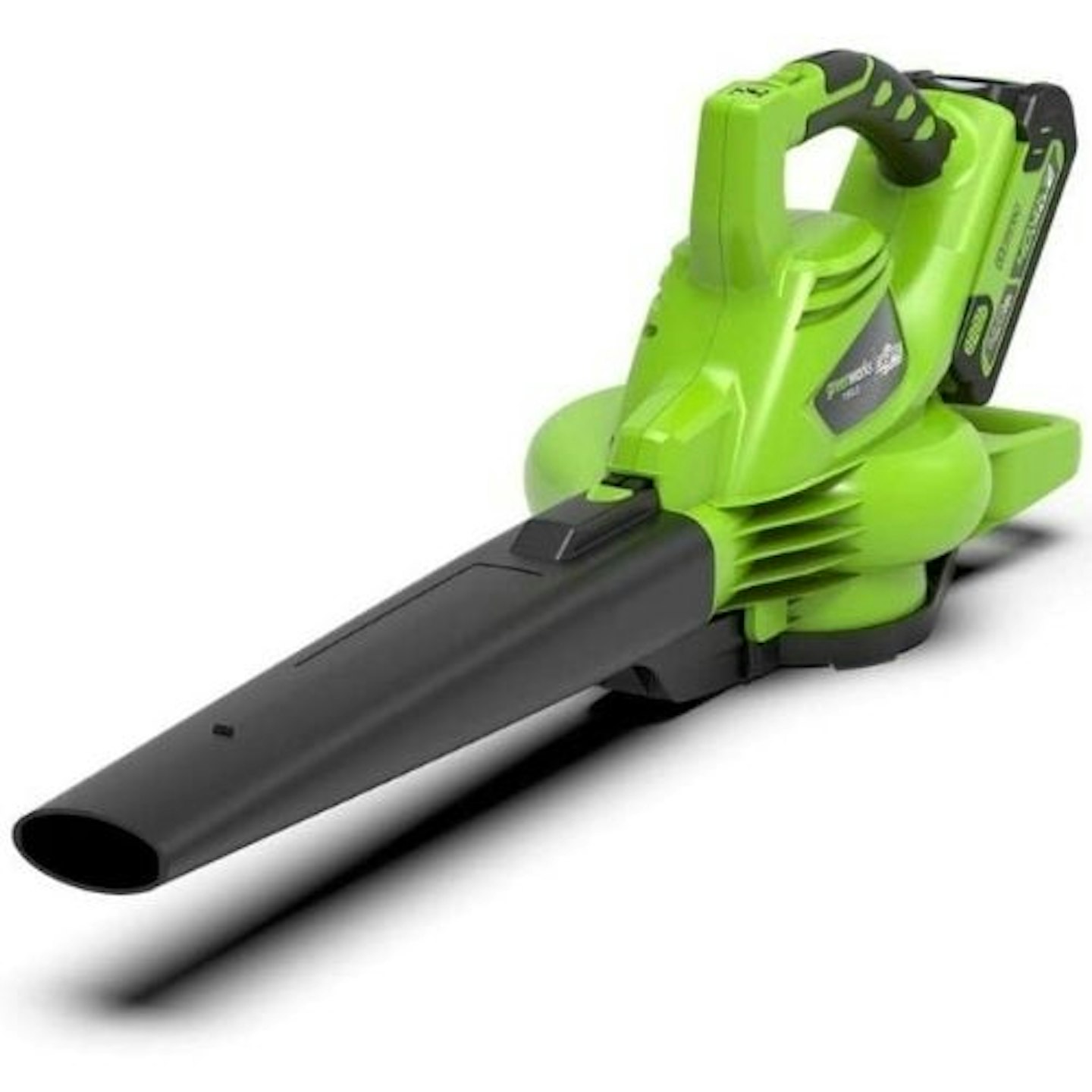 Greenworks/Amazon
Greenworks/AmazonIf you are looking for a portable, cordless garden vacuum, then this 40V battery-powered tool is the one you need. The Greenworks leaf blower can be turned from blowing mode to suction mode without extra add-ons and tools and in just a few simple steps.
This is sold as a "bare tool" requiring the additional purchase of one of Greenworks' rechargeable batteries. Once you've got the kit, this device is practical, easy to handle, and powerful - all you could want from a power tool.
Pros
- Shoulder strap makes handling this tool much easier
- Rechargeable battery makes this very portable
Cons
- Greenworks battery and charger sold separately
| Dimensions: | 116.5 x 82 x 21.6cm |
| Weight: | 4.8kg |
| Power source: | Battery-powered (no battery or charger included) |
| Power: | 40V |
| Collection bag capacity: | 45L |
Best three-in-one garden vacuum
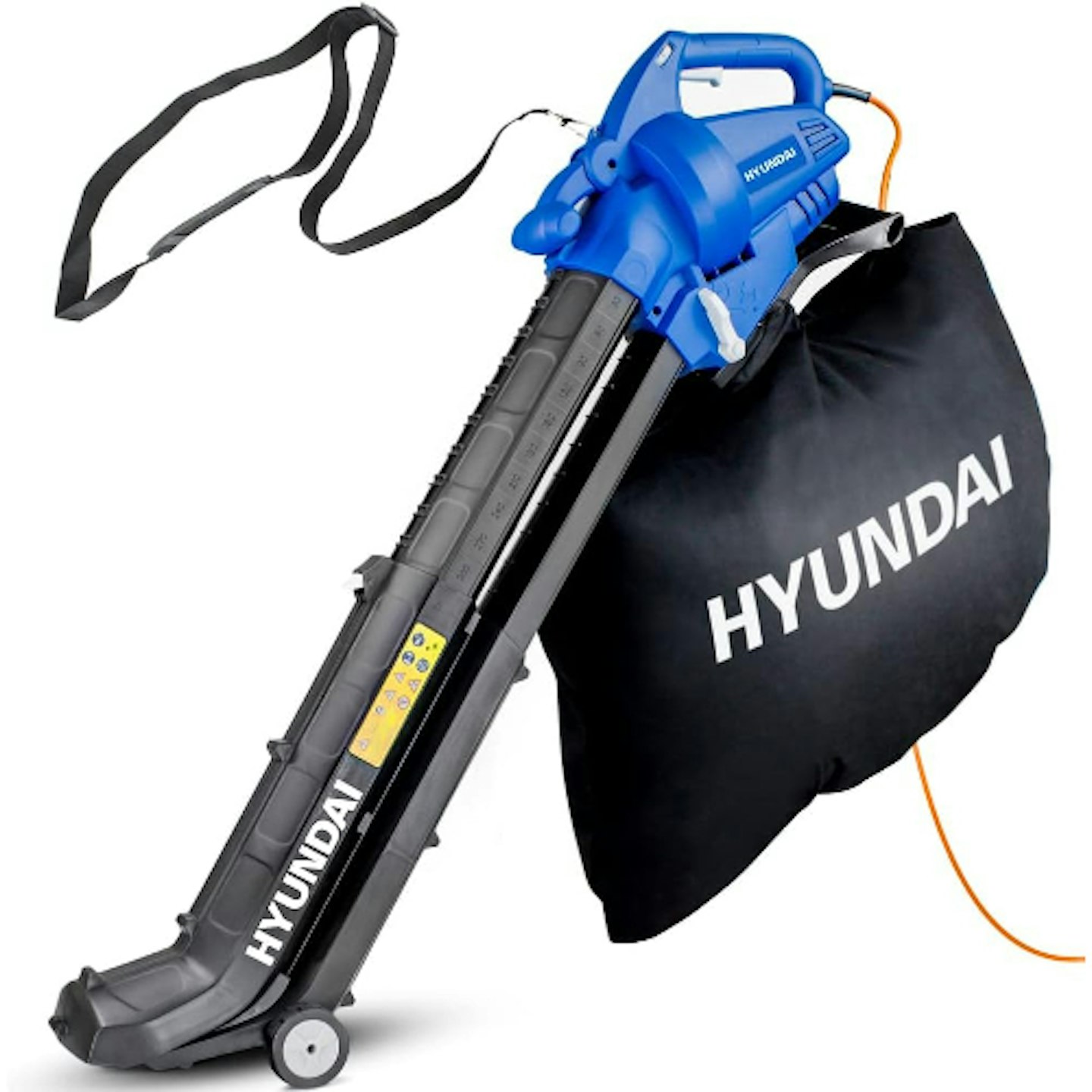 Hyundai/Amazon
Hyundai/AmazonHyundai's garden tool gives you three-in-one functionality - it can work as a leaf blower to get your garden debris in a tidy pile, it can then vacuum it up, and after that, the mulching action means you're good to empty the 45-litre collection bag straight into your composter.
There's a 3,000W motor that's capable of airspeeds from 62 to 170mph so you can use lower speeds on delicate areas and higher speeds when you want to give it some welly. This has an extra-long 12-metre power cable for increased reach, and the vacuum's wheeled nozzle extends from 70cm to 100cm.
Pros
- Wheeled nozzle's length is adjustable
- Ability to change the tool's speed to suit your task
Cons
- Best suited to small gardens
| Dimensions: | 112 x 29 x 112 cm |
| Weight: | 3.3 Kilograms |
| Power source: | Corded electric |
| Power: | 3000W |
| Collection bag capacity: | 45 litres |
How we chose the best garden vacuum
All of these garden vacuums have been hand-selected by our team of Modern Gardens shopping experts. We carefully considered size, power, and functionality in our selection of the best. Our team has spent hours investigating and researching garden vacuums to make it easier for you to find the very best, and we'd never recommend a product we don't believe in.
Where possible, we also test and share the latest and best products you should know about. And with help from Modern Gardens Magazine, Garden News and Garden Answers, we share expert gardening knowledge to help you get the most from your product.
What to look for in a garden vacuum
Gardening expert Geoff Hodge gives tips on what exactly you should be looking for in a garden vacuum.
Motor output is the power (in watts) produced by the motor. 2000-3000 watts is suitable for most garden vacuums. Larger gardens or heavier debris may benefit from higher outputs 3000 watts or more for efficient performance.
Adjustable chute length to suit your height. This avoids losing suction power when the device is held too far off the ground.
Nozzle shape to suit the task. Round nozzles are good for moving bulky leaves quickly; flatter ones suit harder-to-move items, such as stuck-on leaves.
Variable airflow/ speed control allows you to increase the force to shift stubborn leaves or decrease it around fragile plants. Some machines refer to this as a turbo or power boost.
Shredding ratio measures how much the original leaf volume is reduced when it passes through the internal shredding impellors.
Collection bag for leaves. Larger bags need emptying less but become heavier on the shoulder as they fill up. Zipped bags are easier to empty.
Tube support wheel reduces carrying weight and holds the nozzle at the right height for maximum suction.
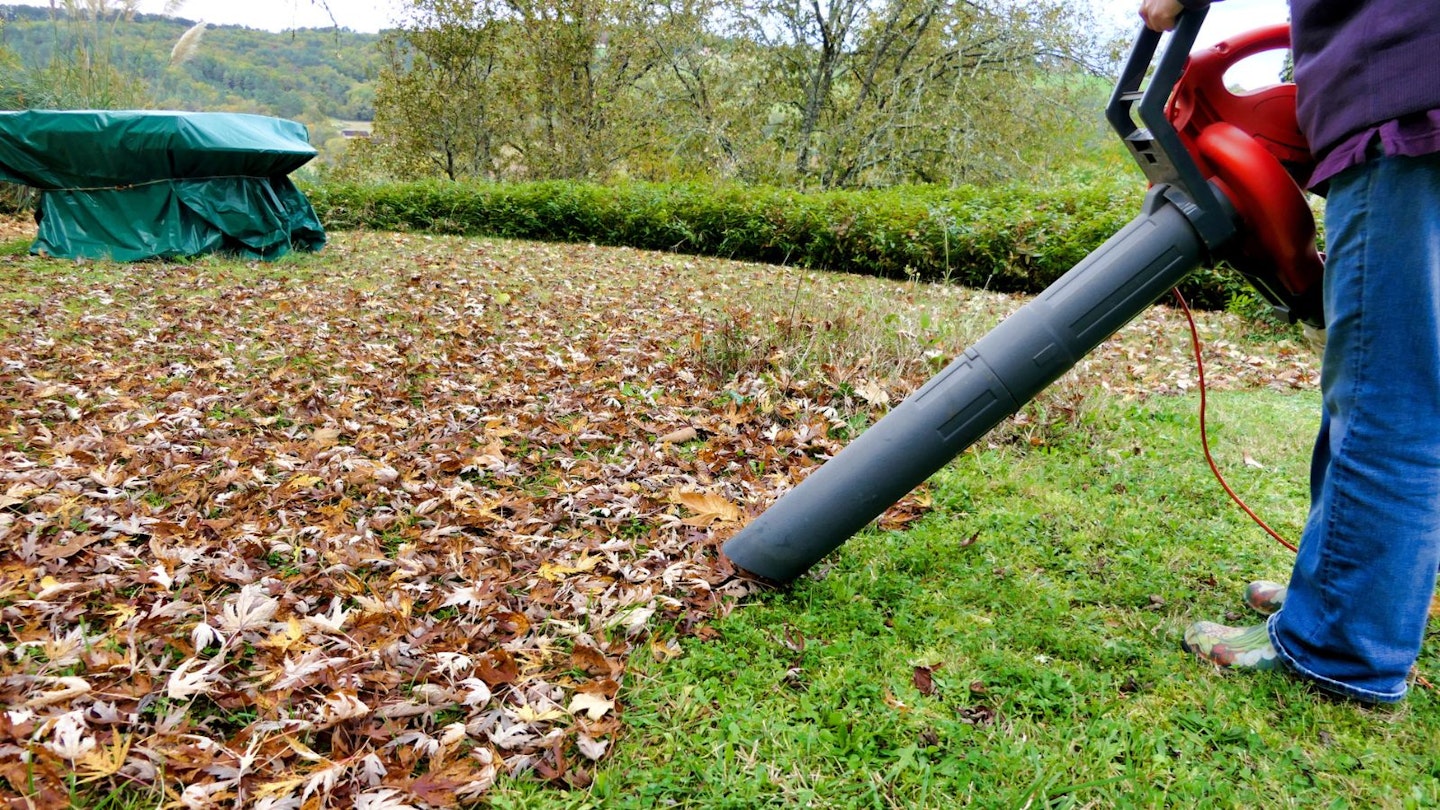
FAQs: Best garden vacuum
How does volume flow rate and airflow speed work in garden vacuums?
Volume flow rate (m³/hr) measures the amount of air expelled from the chute, indicating the quantity of air being moved. A higher figure means more air moves through the machine, resulting in the powerful extraction of garden debris.
However, the air volume is meaningless if it doesn't move fast enough. That's why airflow speed (kph) is also crucial. Airflow speed measures the rate at which air moves through the chute, indicating the intensity or force of the air movement that can affect suction.
The higher the rating, the better the machine can remove wet leaves, heavier debris, and twigs or leaves stuck to a surface.
Garden vacuum: Petrol, electric, or battery-powered?
Petrol garden vacuum
Petrol-driven machines are the most powerful and allow you to roam free, unrestricted by power cables, but they’re overpowered for a small garden. They can be noisy, create polluting emissions, and the engine needs regular maintenance. Alongside petrol garden vacuums, you can get petrol leaf blowers too.
Corded electric garden vacuum
Those powered by mains electricity don’t offer the same walk-around freedom but are more economical to buy and run and don’t produce emissions. Also, an electric garden vacuum tends to be quieter, needs less maintenance and is lighter to carry.
Battery-powered garden vacuum
Battery-powered machines eliminate the trailing cable trip hazard. Lithium-ion batteries provide great performance, which doesn’t diminish and suffer as the battery loses its charge.
Remember that a battery may need frequent recharging if you use the machine a lot. Alternatively, buy a second battery to swap with while recharging. The Ah (ampere/hour) rating shows how much energy it stores – the larger the number, the longer it runs.
Many manufacturers make batteries that can be interchanged with other powered tools in their range, so you may be able to buy the machine on its own or as a kit that includes the battery and charger. The former cuts the cost, as you only need one battery and one charger to power different tools.
Is a garden vacuum worth it?
Garden vacuum prices vary based on brand, features and power. Generally, they range from £50 to £300 or more. There are lightweight models that weigh around 3kg up to 10kg+ for more industrial-grade models.
A garden vacuum can be worth it for efficiently cleaning up leaves, debris and grass clippings – saving time and effort compared to manual methods. It helps maintain a tidy garden and reduces the risk of pests. Consider factors like garden size and your specific needs before deciding on a budget option or a powerful investment.
Gardeners with large yards, numerous trees and seasonal leaf fall would benefit from a garden vacuum. It's especially useful for those seeking a quick and efficient way to maintain a clean outdoor space.
What to read next:
Subscribe to Modern Gardens magazine and get the most out of your outdoor space. Discover everything you need to know to make your outside space look fantastic, quickly and easily, with hundreds of simple ideas, designer tricks, affordable products and expert advice in every issue of Modern Gardens. View our latest subscription offers to save on shop prices.
Natalie Knowles is a Homes & Garden Product Writer for Modern Gardens, specialising in garden trends. When she's not flexing her mow-how, Natalie is a successful artist and illustrator.
